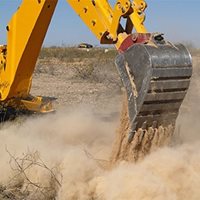 Are low-cost sensors suitable for construction dust monitoring?
Are low-cost sensors suitable for construction dust monitoring?
The evidence would suggest that they are not. These sensors are not designed to work in areas where large amounts of dust can be produced from activities such as demolition. Industrial dust monitors are subjected to intense burst load tests of up to 400mg/m³. High quality monitors can handle this due to a number of features that protect the measurement optics and perform periodic calibration often referred to as “Auto-Zero.” Furthermore, some models are fitted with a high volume sampling pump as well as an air sample dryer to prevent hygroscopic swell of particulates (Read a related TSI application note, "Heated Inlet Sample Conditioning on Remote Dust Monitoring").
Some of these monitors can also perform in winds of up to 25 mph without any loss in sampling efficiency. When you compare that to a low cost sensor with a very small fan, there’s simply no contest. They’re not suitable for the larger particle sizes, higher concentration levels, and changing weather conditions.
What's the conclusion?
Local authorities across the UK are expected to receive expanded legal powers to enforce air quality controls and prosecute where necessary. Given the chronic lack of funding within local government, you can expect the burden of monitoring and demonstrating compliance to be put upon private industry. The unknown at this stage is how prescriptive the government will be with regard to how monitoring is carried out in order to ensure a sufficient degree of data integrity.
As of today, there is a performance standard that exists for PM10 real-time dust monitors. A significant number of local authorities in Greater London attach real-time dust monitoring to a planning condition and insist that MCERTS-certified instruments are used. Expect to see this approach used more often outside of the London area.
Learn more: Read a white paper about MCERTS and dust monitoring in the UK.
About the Author
Myles Quigley is a product manager at TSI for environmental and exposure monitoring. Since joining the company in 2018 he has worked closely with both industry and government to understand the legislation and customer requirements that drive this space. Prior to joining TSI he worked as a Global Product Manager in various industries such as building automation and renewable energy. Myles started his career as a graduate Building Services Engineer before making his move into product management fifteen years ago. During this time he has worked with numerous universities and research institutes, including KTH Royal Institute of Technology, Stockholm and Dresden University of Technology, and many more.
 汉语
汉语
 English
English
 Français
Français
 Deutsch
Deutsch


